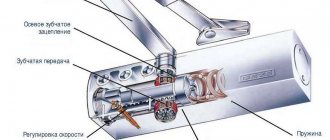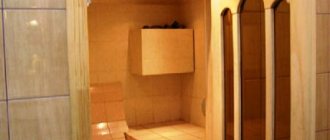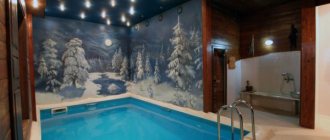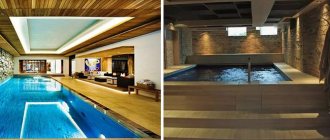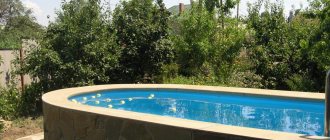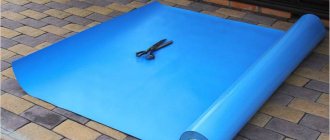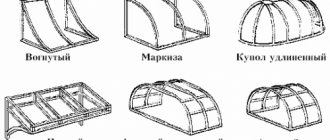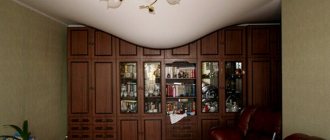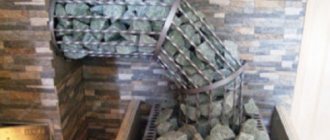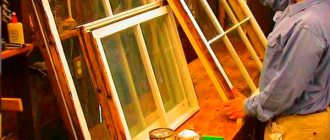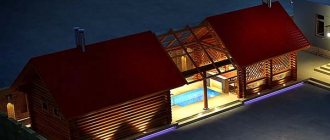What is it, what types are there?
An indoor pool is a complex indoor hydraulic structure, including a bowl, a drainage system with filtration and water supply.
Each type of pool has its own distinctive features. Main types:
Stationary .
This is a structure whose bowl is made of plastic or concrete. Before installation, it is necessary to conduct a soil survey. The bowl can be made of plastic or composite material, and is often cast from concrete.The main difference between an indoor pool is the presence of a roof or a special pavilion for protection.
- Collapsible (frame) . They are not inferior in size to stationary ones, they differ in the installation method. Instead of going deep into the ground, they are placed on a flat area. Pools of this type are covered with awning tents.
- Inflatable . They are close in size to small frame pools, not exceeding a diameter of one and a half meters. They are installed on the site under canopies.
Recommendations for use and care
In artificial reservoirs, water becomes polluted quite quickly and can be a favorable environment for the appearance of harmful bacteria. At the same time, dust, tree branches and fallen leaves constantly get into the outdoor pool.
For small pools, you can build a cover that will keep most of the debris out. Small particles that fall into the reservoir can be easily removed using a fine-mesh net. Algae that has formed on the walls is removed with a soft bristle brush.
It is advisable to change the water in this pool at least once a week. For example, use it to water the garden. The following methods are used to purify water in large pools:
- Electrophysical disinfection is the use of equipment for saturating water with silver ions and ozonizers. Ultraviolet lamps can be used to filter and purify water; they disinfect water by killing mold spores and microbes.
- Chemical treatment is carried out using special substances. As a result, the pH level is normalized and the water is disinfected. The action of chemicals prevents the appearance of algae and eliminates the smallest particles of fat.
- Physical cleaning - removing small and large debris using a net. Constant cleaning with a water filter. Cleaning the internal surface with a vacuum cleaner and brush.
Features of pool water purification
The simplest way to purify water is a water filter. There are three types of systems with varying degrees of filtration. A sand filter based on finely crushed quartz removes harmful microparticles up to 25 microns in size.
Cartridge filters are suitable for medium-sized artificial reservoirs with a diameter of no more than five meters. These filters are equipped with a special valve to get rid of small debris and a water purification system from harmful elements up to 15 microns in size.
Diatomite filters are highly efficient and modern water purification systems. Fossil powder, kieselguhr, mountain flour, etc. are used as a cleaning agent. These particles remove the smallest elements up to one micrometer in size.
Products based on active oxygen, bromine and chlorine are used as chemical cleaning compounds. Chloride compounds are quite effective, but require strict dosage. If doses are exceeded, there is a high risk of skin damage and poisoning.
Bromine-based preparations are safer and do not have a distinct odor. Cleansing with active oxygen is the most convenient and at the same time completely safe for health. The drug is added to the water immediately after filling the pool, taking into account the total volume of liquid.
A swimming pool in a garden plot or in a country house is a great place to relax on hot summer days. And building it with your own hands is not very difficult. You can build a pond from scrap materials, but it is much more reliable to make it from concrete.
Apply markings, make calculations, dig a pit, fill the bowl and complete the finishing. These are the main stages of work. With a little financial investment and effort, you will have a great vacation spot for the whole family.
Advantages and disadvantages
Among the advantages are:
- the presence of a roof - in any weather it will serve as protection from the sun’s rays, since the roof reflects light well and creates a shadow underneath;
- the canopy protects the pool from pollution and mechanical damage, allowing the water to remain clean for a long time;
- at optimal water temperature, you can use the pool in any weather, with protection from rain and wind;
- with a domed roof, the evaporation of water can be reduced, along with it the evaporation of chlorine will decrease, and the water will always be properly disinfected, regardless of the weather;
- the canopy acts as protection from prying eyes - along with the pool, you can also cover part of the yard, creating a secluded place from the neighbors’ eyes;
- in unfavorable climatic conditions, it is often common to combine a swimming pool with a greenhouse - this allows the heat from the heated roof to transfer heat not only to the water, but also to the plantings.
Among the disadvantages are:
- high price - even if you choose a cheap design, you will have to invest a lot of money in its installation, but all investments pay off, an uncovered pool is subject to much greater contamination, which entails losses in the form of special cleaning and disinfectants and devices;
- the roof must be located at the optimal height - if you install it close to the pool, a greenhouse effect is formed, which negatively affects both the well-being of swimmers and the roof itself due to the formation of condensation, in which case special drainage equipment will be needed.
A polypropylene swimming pool for the dacha is a complete plus
Country pools made of polypropylene material are becoming increasingly popular among the population. They perform equally well in a wide variety of climate zones. They are very easy to use.
The type in question is made from sheet polypropylene: this material is environmentally friendly for people and the environment, relatively lightweight, and it is possible to create all kinds of shapes during its production.
It has a number of positive parameters:
- has modern types of design;
- has absolute tightness;
- does not require any special care;
- meets hygiene standards,
- possibility of constant use,
- fairly reasonable cost of installation, equipment, and maintenance.
They are durable, especially if you do not expose them to any mechanical damage. No additional cladding is required.
The polypropylene pool is the best-selling type at this time. Allows significant savings on the use of cleaning elements.
How to do it yourself?
The construction of a swimming pool always begins with the design stage. 3D modeling is best suited for this; even a beginner can handle it . Also, ready-made works from the Internet or author’s sketches can serve as a sketch.
Also, when designing, you should carefully study the topography and quality of the soil, select the most suitable site for building a pit and decide on the necessary materials, shape and size of the pool.
Which material to choose?
The material used for the pool roof must be durable and moisture resistant. Suitable for these purposes:
Aluminum . Lightweight and durable material, characterized by low susceptibility to corrosion and easy maintenance. Used to create frames of various shapes and sizes.- Steel . It is used in the manufacture of small fixed frames of simple design. Prefabricated steel structures require special processing and painting.
- Polycarbonate . It is impact resistant and can have a smooth or honeycomb texture. The first type is similar to glass and stronger than its analogues, and due to its relative transparency, the material protects from sunlight. Available in a wide range of colors.
- Glass . Used in the production of large non-curved canopies. Impact-resistant glass is optimal for installation.
- Film . The most common option is used for the manufacture of large-area roofs. The only negative is its low strength, as it is easily damaged by heavy rain or hail.
- Awning fabric . It is highly durable and does not allow sunlight to pass through.
Finding a place on the site
When choosing a location for a future pool, you need to approach it wisely. Factors affecting installation:
- relief - you need to install the frame on a flat area with direct access to sunlight;
- to reduce the likelihood of water pollution, the pool must be installed away from trees;
- You should not mount the structure near walls or large structures - the shadow falling from them will interfere with uniform heating of the water.
Microclimate and air exchange
The ventilation system is extremely important to maintain the quality of the roof. In open areas, moisture quietly evaporates from the surface. In an indoor pool, it accumulates as condensation and contributes to the formation of fungus.
To maintain temperature and humidity within normal limits, various heaters, dehumidifiers, and air conditioners are used. To determine the necessary devices and their location, consultation with a specialist is necessary.
Constant air exchange with the external environment ensures the normal functioning of the devices and extends the life of the pool. To do this, it is recommended to maintain an optimal air temperature of about +25 degrees, humidity should not exceed 60%.
Construction of the bowl
There are 4 main stages in the construction of the bowl:
Digging soil for a foundation pit .
Such work often requires the use of special equipment. When digging, the dimensions of the pool, which are marked on the ground, are taken into account.- Filling the bowl .
Before the pouring stage, you need to fill the finished pit with sand and gravel, onto which the foundation is poured. After pouring, the process of constructing formwork and reinforcing the frame for the pool begins. The concrete must contain special components that provide waterproof properties. - Waterproofing . It is necessary to protect the structure in the event of a concrete defect. After dismantling, the surface is treated with a compound that opens the pores in the concrete, which are covered with a waterproofing solution.
- Finishing . The process of leveling the surface of a bowl with special plaster or decorative finishing. Mosaics or tiles are most often used, as this coating is distinguished by its uniqueness and durability.
How to build a roof?
An indoor pool requires the installation of a roof, most often an arched structure. You can build it yourself or order it from a specialized company.
The frame often consists of aluminum profiles lined with polycarbonate. The structure always contains detailed instructions, according to which you can easily assemble the roof.
Read about how to cover a pool here.
Equipment
In addition to the basic equipment in the form of ventilation systems, an indoor pool requires the installation of dehumidifiers . They can be industrial and semi-industrial. You can install the dehumidifier on the wall or integrate it into the structure. The first option is optimal, since with convenient access to the device it is easy to maintain its condition.
Filters and a pump are considered one of the most important devices. Their selection is carried out in accordance with the volume of water and the shape of the pool. The filter is necessary to maintain the optimal water level, purify it and return it to the system.
It is also necessary to install devices to maintain humidity . And as a bonus, hydromassage systems or single small fountains are installed.
Read more about pool equipment here.
Pool water quality
You also need to pay great attention to the choice of filter and pump to ensure quality water. These devices are also selected taking into account the size of the bowl and the location of the pool .
To remove the top layer of water, skimmers are installed, these are tanks with a valve. They are connected to the water intake pipeline, so the water undergoes initial cleaning. To renew the water layer from below, skimmers are equipped with bottom drains. After cleaning and draining, the water flows back into the bowl through the nozzles in the wall.
Additionally, you can install a hydromassage system or other options . The Internet offers different options for indoor pools with photos. All preferences must be determined immediately before developing the project.
There are several ways to build at least a small swimming pool for your summer house - purchase and install a structure that is ready for use or build it from scratch. Naturally, it’s up to you to decide which method you choose, but it’s much more interesting to make a pool for your dacha yourself. There are now plenty of photos of swimming pools on the Internet, and you can realize all your fantasies.
Where and approximately at what price can I order production?
The construction of a swimming pool can be ordered from one of many specialized companies. For example, in Moscow and the Moscow region some of the best companies are: PulMarket, Gidrostroymontazh and Basseynoff.
The price is influenced by the following criteria:
- complexity of the project;
- pool area;
- soil features and geological complications;
- features of external and internal finishing, waterproofing;
- technical additions: stairs, bridges;
- pool equipment.
The construction of the pool bowl will cost about 800 - 900 thousand rubles. This price (including all materials) includes:
- pit preparation – 50 thousand,
- preparation of a concrete bowl and base - 350 thousand,
- waterproofing and cladding – 300 thousand,
- basic equipment - 200 thousand.
The price may vary, ranging from the size of the structure to the region of installation. The cost of a covered canopy averages from 50 to 100 thousand rubles. depending on materials and design.
How to care for an artificial pond?
Pool care includes several simple points:
- Monitoring the condition of metal structural elements: cleaning from rust, coating with special paints, primer or putty.
- Cleaning the outside of the pavilion using detergents and rinsing the inside of dirt with clean water. Abrasive or alcohol solutions are not recommended for use, and the use of rough objects is also excluded.
- To maintain the quality of an indoor pool when it is not needed, it is worth covering the water with a special solar film. This will reduce humidity under the dome and maintain the quality of the structure.
- When the weather changes and strong winds appear, you need to close the pavilion to all fastenings to ensure protection, and then not waste time on cleaning.
- In winter, clear the pool of snow and do this not only from the inside, but also from the outside. Under the pressure of snow, the roof can become deformed or even collapse.
Indoor pool in the country - beauty and comfort
Which design should you choose for your personal plot - closed or open? The fact that there are usually a lot of trees on a private plot, therefore the process of polluting the pool with various foliage or dust will occur quite intensively. And the indoor option is less susceptible to such factors, therefore, you will not have to clean it too often - this way you will save not only your time, but also money.
Indoor option for a summer residence
Accordingly, the pool itself will last much longer. In addition, there is the possibility of permanent use of this type of pool: especially if there is not only a roof or canopy, but also walls that help retain heat inside the pool room.
Almost any type of building can be made covered, regardless of its design features. For stationary models, provision is made for the construction of a protective frame in advance. For more bulky options, for example, inflatable ones, you can build a small canopy in the form of an arch.
Options for building an indoor pool will depend, first of all, on your financial capabilities, your imagination and your desire to build something exclusive on your site and as comfortable as possible.
Photos of finished options
Below are photos of finished indoor pools:
Swimming pool combined with greenhouse
Swimming pool with polycarbonate roof
Swimming pool with glass roof
